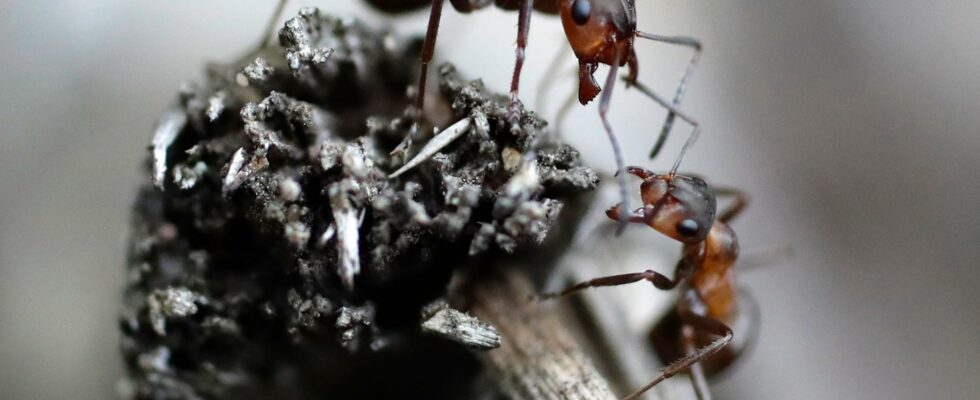unsaveSave
expand-left
full screen Modern ants communicate in much the same way today as their relatives did 100 million years ago. But these days, they can talk to more people, according to new research. Archive image. Photo: Sergei Grits/AP/TT
Ants’ advanced way of communicating with each other has caused them to spread across the globe. New research shows that they learned it a long time ago.
“Their sophisticated communication was perfected early in evolution,” explains researcher Ryo Taniguchi.
Already tens of millions of years before triceratops and tyrannosaurus walked the surface of the planet, ants had learned to communicate much like they do today. This is shown by a study in which Japanese and American researchers analyzed the antennae of ants. They contain sense organs to detect pheromones, scents secreted by other ants.
Contributed to dominance
“Communication is one of the most important tasks for ants, which has contributed to them becoming dominant in ecosystems,” explains Ryo Taniguchi of Japan’s Hokkaido University in an email interview, and continues:
“The colonies can cooperate and behave as a single individual through complex pheromone communication. It allows them to gather food efficiently, cooperate against dangers and compete against solitary animals”.
Three ants of the now extinct species Gerontoformica gracilis met their fate during the Cretaceous period 100 million years ago when they were stuck in resin and fossilized in amber, like the mosquitoes in “Jurassic Park”. Ryo Taniguchi and his colleagues cut the ants’ antennae, examined them with confocal microscopes and compared them to six living ant species. The sense organs were basically identical.
“Even though G gracilis is a primitive ant species, we think their way of communicating was relatively modern,” writes Ryo Taniguchi.
From small to large
He explains that this chemical communication method was complex and well developed already 100 million years ago, so it has not had to change much over the years. On the other hand, it seems that the ant colonies were very small at the time and gradually grew. Ants are found today on almost all the world’s land surfaces.
“It suggests that for more than 100 million years the ants have evolved to maintain large colonies and establish their dominions,” writes Ryo Taniguchi.
FACT That’s how the study was done
Three ants fossilized in amber during the Cretaceous period 100 million years ago have been examined using a new imaging technique.
The researchers cut the ants’ antennae, and ground away the surrounding amber to about 100 micrometers thick (one-tenth of a millimeter, about the thickness of a human hair). Next, the sense organs of the antennae were examined by rotating them and taking images with confocal laser microscopy (CLSM), and compared with six modern ant species.
The study has been published in the journal Science Advances.
Read more
